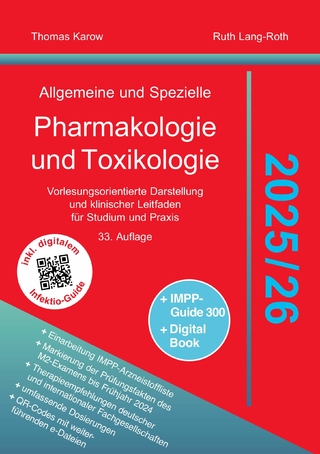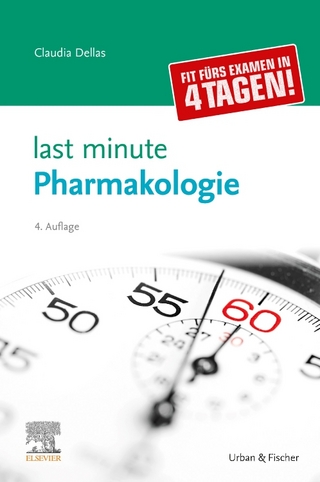
Computational Toxicology
John Wiley & Sons Inc (Verlag)
978-1-119-28256-3 (ISBN)
- Titel z.Zt. nicht lieferbar
- Versandkostenfrei innerhalb Deutschlands
- Auch auf Rechnung
- Verfügbarkeit in der Filiale vor Ort prüfen
- Artikel merken
Provides a perspective of what is currently achievable with computational toxicology and a view to future developments
Helps readers overcome questions of data sources, curation, treatment, and how to model / interpret critical endpoints that support 21st century hazard assessment
Assembles cutting-edge concepts and leading authors into a unique and powerful single-source reference
Includes in-depth looks at QSAR models, physicochemical drug properties, structure-based drug targeting, chemical mixture assessments, and environmental modeling
Features coverage about consumer product safety assessment and chemical defense along with chapters on open source toxicology and big data
Sean Ekins, MSc, PhD, DSc has over 20 years of pharmaceutical and toxicology experience. He is the founder or co-founder of two companies and Adjunct Professor at three universities. He has been awarded 16 NIH grants as Principal Investigator. He has authored or co authored over 285 peer-reviewed papers and book chapters and edited five books with Wiley. His research is focused on collaborations to facilitate rare and neglected disease drug discovery.
List of Contributors xvii
Preface xxi
Acknowledgments xxiii
Part I Computational Methods 1
1 AccessibleMachine Learning Approaches for Toxicology 3
Sean Ekins, Alex M. Clark, Alexander L. Perryman, Joel S. Freundlich, Alexandru Korotcov, and Valery Tkachenko
1.1 Introduction 3
1.2 Bayesian Models 5
1.2.1 CDD Models 7
1.3 Deep LearningModels 13
1.4 Comparison of Different Machine LearningMethods 16
1.4.1 Classic Machine LearningMethods 17
1.4.1.1 Bernoulli Naive Bayes 17
1.4.1.2 Linear Logistic Regression with Regularization 18
1.4.1.3 AdaBoost Decision Tree 18
1.4.1.4 Random Forest 18
1.4.1.5 Support Vector Machine 19
1.4.2 Deep Neural Networks 19
1.4.3 Comparing Models 20
1.5 FutureWork 21
Acknowledgments 21
References 21
2 Quantum Mechanics Approaches in Computational Toxicology 31
Jakub Kostal
2.1 Translating Computational Chemistry to Predictive Toxicology 31
2.2 Levels of Theory in Quantum Mechanical Calculations 33
2.3 Representing Molecular Orbitals 38
2.4 Hybrid Quantum and Molecular Mechanical Calculations 39
2.5 Representing System Dynamics 40
2.6 Developing QM Descriptors 42
2.6.1 Global Electronic Parameters 42
2.6.1.1 Electrostatic Potential, Dipole, and Polarizability 43
2.6.1.2 Global Electronic Parameters Derived from Frontier Molecular Orbitals (FMOs) 45
2.6.2 Local (Atom-Based) Electronic Parameters 47
2.6.2.1 Parameters Derived from Frontier Molecular Orbitals (FMOs) 48
2.6.2.2 Partial Atomic Charges 51
2.6.2.3 Hydrogen-Bonding Interactions 51
2.6.2.4 Bond Enthalpies 53
2.6.3 Modeling Chemical Reactions 53
2.6.4 QM/MM Calculations of Covalent Host-Guest Interactions 56
2.6.5 Medium Effects and Hydration Models 59
2.7 Rational Design of Safer Chemicals 61
References 64
Part II Applying Computers to Toxicology Assessment: Pharmaceutical, Industrial and Clinical 69
3 Computational Approaches for Predicting hERG Activity 71
Vinicius M. Alves, Rodolpho C. Braga, and Carolina Horta Andrade
3.1 Introduction 71
3.2 Computational Approaches 73
3.3 Ligand-Based Approaches 73
3.4 Structure-Based Approaches 77
3.5 Applications to Predict hERG Blockage 77
3.5.1 Pred-hERGWeb App 79
3.6 Other Computational Approaches Related to hERG Liability 82
3.7 Final Remarks 83
References 83
4 Computational Toxicology for Traditional Chinese Medicine 93
Ni Ai and Xiaohui Fan
4.1 Background, Current Status, and Challenges 93
4.2 Case Study: Large-Scale Prediction on Involvement of Organic Anion Transporter 1 in Traditional Chinese Medicine-Drug Interactions 99
4.2.1 Introduction to OAT1 and TCM 99
4.2.2 Construction of TCM Compound Database 101
4.2.3 OAT1 Inhibitor Pharmacophore Development 101
4.2.4 External Test Set Evaluation 102
4.2.5 Database Searching 102
4.2.6 Results: OAT1 Inhibitor Pharmacophore 103
4.2.7 Results: OAT1 Inhibitor Pharmacophore Evaluation 104
4.2.8 Results: TCM Compound Database Searching Using OAT1 Inhibitor Pharmacophore 104
4.2.9 Discussion 110
4.3 Conclusion 114
Acknowledgment 114
References 114
5 PharmacophoreModels for Toxicology Prediction 121
Daniela Schuster
5.1 Introduction 121
5.2 Antitarget Screening 125
5.3 Prediction of Liver Toxicity 125
5.4 Prediction of Cardiovascular Toxicity 127
5.5 Prediction of Central Nervous System (CNS) Toxicity 128
5.6 Prediction of Endocrine Disruption 130
5.7 Prediction of ADME 135
5.8 General Remarks on the Limits and Future Perspectives for Employing Pharmacophore Models in Toxicological Studies 136
References 137
6 Transporters in Hepatotoxicity 145
Eleni Kotsampasakou, Sankalp Jain, Daniela Digles, and Gerhard F. Ecker
6.1 Introduction 145
6.2 Basolateral Transporters 146
6.3 Canalicular Transporters 148
6.4 Data Sources for Transporters in Hepatotoxicity 148
6.5 In Silico Transporters Models 150
6.6 Ligand-Based Approaches 150
6.7 OATP1B1 and OATP1B3 150
6.8 NTCP 154
6.9 OCT1 154
6.10 OCT2 154
6.11 MRP1, MRP3, and MRP4 155
6.12 BSEP 155
6.13 MRP2 156
6.14 MDR1/P-gp 156
6.15 MDR3 157
6.16 BCRP 157
6.17 MATE1 158
6.18 ASBT 159
6.19 Structure-Based Approaches 159
6.20 Complex Models Incorporating Transporter Information 160
6.21 In Vitro Models 160
6.22 Multiscale Models 161
6.23 Outlook 162
Acknowledgments 164
References 164
7 Cheminformatics in a Clinical Setting 175
Matthew D. Krasowski and Sean Ekins
7.1 Introduction 175
7.2 Similarity Analysis Applied to Drug of Abuse/Toxicology Immunoassays 177
7.3 Similarity Analysis Applied toTherapeutic Drug Monitoring Immunoassays 187
7.4 Similarity Analysis Applied to Steroid Hormone Immunoassays 191
7.5 Cheminformatics Applied to "Designer Drugs" 195
7.6 Relevance to Antibody-Ligand Interactions 202
7.7 Conclusions and Future Directions 203
Acknowledgment 204
References 204
Part III Applying Computers to Toxicology Assessment: Environmental and Regulatory Perspectives 211
8 Computational Tools for ADMET Profiling 213
Denis Fourches, Antony J.Williams, Grace Patlewicz, Imran Shah, Chris Grulke, JohnWambaugh, Ann Richard, and Alexander Tropsha
8.1 Introduction 213
8.2 Cheminformatics Approaches for ADMET Profiling 214
8.2.1 Chemical Data Curation Prior to ADMET Modeling 215
8.2.2 QSAR Modelability Index 217
8.2.3 Predictive QSAR Model DevelopmentWorkflow 218
8.2.4 Hybrid QSAR Modeling 220
8.2.4.1 Simple Consensus 223
8.2.4.2 Mixed Chemical and Biological Features 223
8.2.4.3 Two-Step HierarchicalWorkflow 224
8.2.5 Chemical Biological Read-Across 226
8.2.6 Public Chemotype Approach to Data-Mining 229
8.3 Unsolved Challenges in Structure Based Profiling 230
8.3.1 Biological Data Curation 231
8.3.2 Identification and Treatment of Activity and Toxicity Cliffs 233
8.3.3 In Vitro to In Vivo Continuum in the Context of AOP 233
8.4 Perspectives 234
8.4.1 Profilers on the Go with Mobile Devices 235
8.4.2 Structure–Exposure–Activity Relationships 236
8.5 Conclusions 237
Acknowledgments 237
Disclaimer 237
References 238
9 Computational Toxicology and Reach 245
Emilio Enfenati, Anna Lombardo, and Alessandra Roncaglioni
9.1 A Theoretical and Historical Introduction to the Evolution Toward Predictive Models 245
9.2 Reach and the Other Legislations 247
9.3 Annex XI of Reach for QSARModels 248
9.3.1 The First Condition of Annex XI and QMRF 249
9.3.2 The Second Condition and the Applicability Domain 251
9.3.3 TheThird Condition of Annex XI, and the Use of the QSAR Models 252
9.3.4 Adequate and Reliable Documentation of the Applied Method 254
9.4 The ECHA Guidelines and the Use of QSAR Models within ECHA 255
9.4.1 Example of Bioconcentration Factor (BCF) 255
9.4.2 Example of Mutagenicity (Reverse-Mutation Assay) Prediction 260
9.5 Conclusions 266
References 266
10 Computational Approaches to Predicting Dermal Absorption of Complex Topical Mixtures 269
Jim E. Riviere and Jason Chittenden
10.1 Introduction 269
10.2 Principles of Dermal Absorption 270
10.3 Dermal Mixtures 274
10.4 Model Systems 275
10.5 Local Skin Versus Systemic Endpoints 277
10.6 QSAR Approaches to Model Dermal Absorption 278
10.7 PharmacokineticModels 281
10.8 Conclusions 284
References 285
Part IV New Technologies for Toxicology, Future Perspectives 291
11 Big Data in Computational Toxicology: Challenges and Opportunities 293
Linlin Zhao and Hao Zhu
11.1 Big Data Scenario of Computational Toxicology 293
11.2 Fast-Growing Chemical Toxicity Data 295
11.3 The Use of Big Data Approaches in Modern Computational Toxicology 299
11.3.1 Profiling the Toxicants with Massive Biological Data 299
11.3.2 Read-Across Study to Fill Data Gap 301
11.3.3 Unstructured Data Curation 302
11.4 Challenges of Big Data Research in Computational Toxicology and Relevant Forecasts 303
References 304
12 HLA-Mediated Adverse Drug Reactions: Challenges and Opportunities for Predictive Molecular Modeling 313
George van Den Driessche and Denis Fourches
12.1 Introduction 313
12.2 Human Leukocyte Antigens 314
12.2.1 HLA Proteins 314
12.2.2 ADR–HLA Associations 316
12.2.3 HLA-Drug-Peptide Proposed T-Cell Signaling Mechanisms 321
12.3 Structure-Based Molecular Docking to Study HLA-Mediated ADRs 322
12.3.1 Structure-Based Docking 324
12.3.2 Case Study: Abacavir with B*57:01 326
12.3.3 Limitations 332
12.4 Perspectives 334
References 335
13 Open Science Data Repository for Toxicology 341
Valery Tkachenko, Richard Zakharov, and Sean Ekins
13.1 Introduction 341
13.2 Open Science Data Repository 342
13.3 Benefits of OSDR 344
13.3.1 Chemically and Semantically Enabled Scientific Data Repository 344
13.3.2 Chemical Validation and Standardization Platform 346
13.3.3 Format Adapters 347
13.3.4 Open Platform for Data Acquisition, Curation, and Dissemination 350
13.3.5 Dataledger 350
13.4 Technical Details 351
13.5 FutureWork 353
13.5.1 Implementation of Ontology-Based Properties 356
13.5.2 Implementation of an Advanced Search System 357
13.5.3 Implementation of a Scientist Profile, Advanced Security, Data Sharing Capabilities and Notifications Framework 357
References 358
14 Developing Next Generation Tools for Computational Toxicology 363
Alex M. Clark, Kimberley M. Zorn, Mary A. Lingerfelt, and Sean Ekins
14.1 Introduction 363
14.2 Developing Apps for Chemistry 364
14.3 Green Chemistry 364
14.3.1 Green Solvents and Lab Solvents 367
14.3.2 Green Lab Notebook 370
14.4 Polypharma and Assay Central 374
14.4.1 Future Efforts with Assay Central 380
14.5 Conclusion 382
Acknowledgments 383
References 383
Index 389
| Erscheinungsdatum | 26.03.2018 |
|---|---|
| Reihe/Serie | Wiley Series on Technologies for the Pharmaceutical Industry |
| Verlagsort | New York |
| Sprache | englisch |
| Maße | 155 x 231 mm |
| Gewicht | 726 g |
| Themenwelt | Studium ► 2. Studienabschnitt (Klinik) ► Pharmakologie / Toxikologie |
| Naturwissenschaften ► Biologie ► Biochemie | |
| ISBN-10 | 1-119-28256-X / 111928256X |
| ISBN-13 | 978-1-119-28256-3 / 9781119282563 |
| Zustand | Neuware |
| Informationen gemäß Produktsicherheitsverordnung (GPSR) | |
| Haben Sie eine Frage zum Produkt? |
aus dem Bereich


